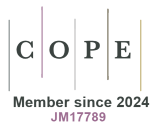Distribution methods of ostomy and incontinence aids in the Italian healthcare setting: an evaluation questionnaire and social burden of direct distribution
DOI:
https://doi.org/10.33393/grhta.2022.2292Keywords:
Economic evaluation, Home distribution of medical devices, Ostomy, Self-catheterization, Spinal cord injuryAbstract
Background: The distribution of ostomy and incontinence devices takes place through different modalities according to the regional provisions in force. A first possibility is represented by direct distribution by the local health authorities. A second possibility consists of indirect distribution through affiliated retailers, typically pharmacies and authorized retailers of medical devices. A third form of distribution concerns home distribution.
Methods: A survey has been administered to patients’ associations in order to investigate the degree of patients’ satisfaction with the distribution methods of medical devices necessary for the conditions associated with ostomy and incontinence and to provide an estimate of the indirect costs associated with distribution methods in the Italian healthcare context through the development of a budget impact model.
Results: The distribution methods associated with a greater degree of satisfaction seem to be indirect and home distribution. Regarding the results of the budget impact mode, in our simulation, a diffusion of home distribution compared to direct and indirect distribution could lead to savings equal to 2,479,519 € over the three-year time horizon considered.
Conclusion: The analysis conducted demonstrates how an increase in home distribution in the context of devices associated with people with ostomy or who practice self-catheterization can be associated with resource savings for the entire society (indirect costs avoided). The survey also demonstrates how this distribution method is associated with a good degree of satisfaction on the part of the users who use it.
References
- Decreto del Presidente del Consiglio Dei Ministri – 12 gennaio 2017 – Definizione e aggiornamento dei livelli essenziali di assistenza, di cui all’articolo 1, comma 7, del decreto legislativo 30 dicembre 1992, n. 502. (17°02015) (GU Serie Generale n.65 del 18-03-2017 – Suppl. Ordinario n. 15); Online: https://www.gazzettaufficiale.it/eli/id/2017/03/18/17A02015/sg (ultimo accesso: ottobre 2021)
- Conversione in legge, con modificazioni, del decreto-legge 18 settembre 2001, n. 347, recante interventi urgenti in materia di spesa sanitaria” – Legge 16 novembre 2001, n. 405. Online: https://www.parlamento.it/parlam/leggi/01405l.htm (ultimo accesso: gennaio 2022)
- Decreto Ministeriale – 11 giugno 2010 - Definizione modalità e contenuti prove di ammissione ai corsi di laurea Specialistica/Magistrale programmati a livello nazionale - anno accademico 2010/2011. Online: http://attiministeriali.miur.it/anno-2010/giugno/dm-11062010.aspx (ultimo accesso: ottobre 2021)
- Cornago D, Garattini L. The stoma appliances market in five European countries: a comparative analysis. Appl Health Econ Health Policy. 2002;1(1):43-50. PMID:14618747
- Garattini L, Cornago D, Tediosi F. A comparative analysis of domiciliary oxygen therapy in five European countries. Health Policy. 2001;58(2):133-149. https://doi.org/10.1016/S0168-8510(01)00155-5 PMID:11551663 DOI: https://doi.org/10.1016/S0168-8510(01)00155-5
- Armeni P., Bertolani A., Costa F., Jommi C., Otto M., Politiche del farmaco ed impatto sulla spesa: gli effetti di quindici anni di decentramento nel SSN, con un focus sull’adozione di forme alternative di distribuzione dei farmaci, in Rapporto OASI 2017, Egea. Online https://iris.unibocconi.it/handle/11565/4002356 (ultimo accesso: gennaio 2022)
- Berti G, et al. La customer satisfaction nella distribuzione diretta dei farmaci compresi nell’allegato 2 al DM 22/12/2000. Bollettino SIFO; 2006:48.
- Bruni V, Garlatti A. Distribuzione dei farmaci: gestione diretta o tramite farmacie? Materiali e metodi da un caso aziendale. Mecosan. 2014;91(91):81-104. https://doi.org/10.3280/MESA2014-091005 DOI: https://doi.org/10.3280/MESA2014-091005
- Jommi C, Paruzzolo S. Il costo della distribuzione diretta dei farmaci: analisi del caso Umbria. Economia & Politica del Farmaco. 2005;5:23-29.
- Jommi C, Bianco A, Chiumente M, Valinotti G, Cattel F. Il costo della distribuzione diretta dei farmaci in dieci aziende sanitarie piemontesi. Giornale Italiano di Farmacia Clinica. 2015;29(3):153-169. https://doi.org/10.1721/2016.21938
- Rega C, Gamberini L, De Rosa M. Analisi dei costi di servizio per confezione dei farmaci in PHT relativi alle differenti modalità distributive: diretta o per conto. Giornale Italiano di Farmacia Clinica. 2010;24(4):438-447. https://doi.org/10.1721/1094.12074
- Scala D, et al. La distribuzione diretta dei farmaci nell’A.O. Cardarelli di Napoli: un’esperienza di informazione al paziente. GIFC. 2012;26(1):7-16. https://doi.org/10.1721/1109.12202
- La qualità dei dispositivi medici, le paure e le aspettative degli italiani; F.A.I.S. Onlus Federazione Associazioni Incontinenti e Stomizzati. Online: https://www.fais.info/wp-content/uploads/2013/04/Documento-Nazionale-FAIS-1.pdf (ultimo accesso: giugno 2021)
- Douglas M. Anderson, A. Elliot Michelle, Mosby’s medical, nursing, & Allied Health Dictionary sesta edizione. New York: Piccin; 2004.
- Tomaselli N, McGinnis DE. Urinary diversions: surgical interventions. In: Colwell JC, Goldberg MT, Carmel JE, eds. Fecal and Urinary Diversions: Management and Principles. St Louis, MO: Mosby-Yearbook; 2004:184-204.
- AGENAS, documento di indirizzo per l’organizzazione dell’assistenza alla persona con lesione midollare, 2015. Online: https://ausmontecatone.org/wp-content/uploads/2017/02/150519-CCM2012-Documento-Percorso-Lesione-Midollare-22-Gennaio-2015.pdf (ultimo accesso: giugno 2021)
- Istituto Nazionale di Statistica; Online: http://dati.istat.it/Index.aspx?DataSetCode=DCSC_RETRCONTR1C (ultimo accesso: ottobre 2021)
- Drummond MF, Sculpher MJ, Claxton K, Stoddart GL, Torrance GW. Methods for the economic evaluation of health care programmes. Oxford University Press; 2015.










